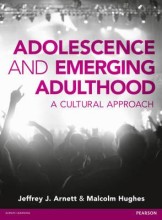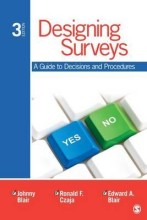Summary: Adolescence And Emerging Adulthood:a Cultural Approach | 9781408253908 | Jeff Arnett, et al
- This + 400k other summaries
- A unique study and practice tool
- Never study anything twice again
- Get the grades you hope for
- 100% sure, 100% understanding
Read the summary and the most important questions on Adolescence and Emerging Adulthood:A Cultural Approach | 9781408253908 | Jeff Arnett and Malcolm Hughes.
-
1 Introduction
-
1.1.4 The age of adolescence, 1890-1920
This is a preview. There are 2 more flashcards available for chapter 1.1.4
Show more cards here -
What are three key changes during the years 1890-1920 in establishing the characteristics of modern adolescence?
1. The enactment of laws restricting child labor.
2. New requirements for children to attend secondary school.
3. The development of the field of adolescence as an area of research and study. -
As a consequence of the laws restricting child labor and new requirements for children to attend secondary school the proportion of adolescents in school increased dramatically. Why contributed this change to making this the Age of Adolescence?
Because it marked a more distinct separation between adolescence as a period of continued schooling and adulthood as a period that begins after schooling is finished. -
What is the theory of recapitulation?
It held that the development of each individual recapitulates or re-enacts the evolutionary development of the human species as a whole. -
How used Hall the theory of recapitulation to come to his idea of storm and stress?
He believed the stage of adolescence reflected a stage in the human evolutionary past when there was a great deal of upheaval and disorder, with the result that adolescents experience a great deal of storm and stress as a standard part of their development. -
As Hall described it, adolescent storm and stress is reflected in especially high rates of what three types of difficulties during the adolescent period?
1. Conflict with parents.
2. Mood disruptions.
3. Risk behavior. -
How did Anna Freud viewed storm and stress?
As universal and inevitable, to the extent that its absence signified a serious psychological problem. -
How did anthropologists countered Hall’s claim that a tendency toward storm and stress in adolescence is universal and biological?
By describing non-Western cultures in which adolescence was neither stormy nor stressful. -
What does research today shows with respect to storm and stress?
That not all adolescents experience storm and stress with respect to conflict with parents, mood disruptions and risk behavior, but adolescence is the period when storm and stress is more likely to occur than at other ages. -
At what ages do the different aspects of storm and stress peak?
1. Conflict with parents in early to mid-adolescence.
2. Mood disruptions in mid-adolescence.
3. Risk behavior in late adolescence and emerging adulthood. -
1.2 Adolescence and emerging adulthood
This is a preview. There are 4 more flashcards available for chapter 1.2
Show more cards here -
Why was the term emerging adulthood introduced?
A great deal happens in the late teens and early 20s that is related to development earlier in adolescence and that has important implications for the path that development takes in adulthood.
- Higher grades + faster learning
- Never study anything twice
- 100% sure, 100% understanding
Topics related to Summary: Adolescence And Emerging Adulthood:a Cultural Approach
-
Introduction - Adolescence around the world: a brief regional overview - Sub-Saharan Africa
-
Introduction - Adolescence around the world: a brief regional overview - North Africa and the Middle East
-
Introduction - Adolescence around the world: a brief regional overview - Asia
-
Introduction - Adolescence around the world: a brief regional overview - India
-
Family relationships
-
Problems and resilience
































